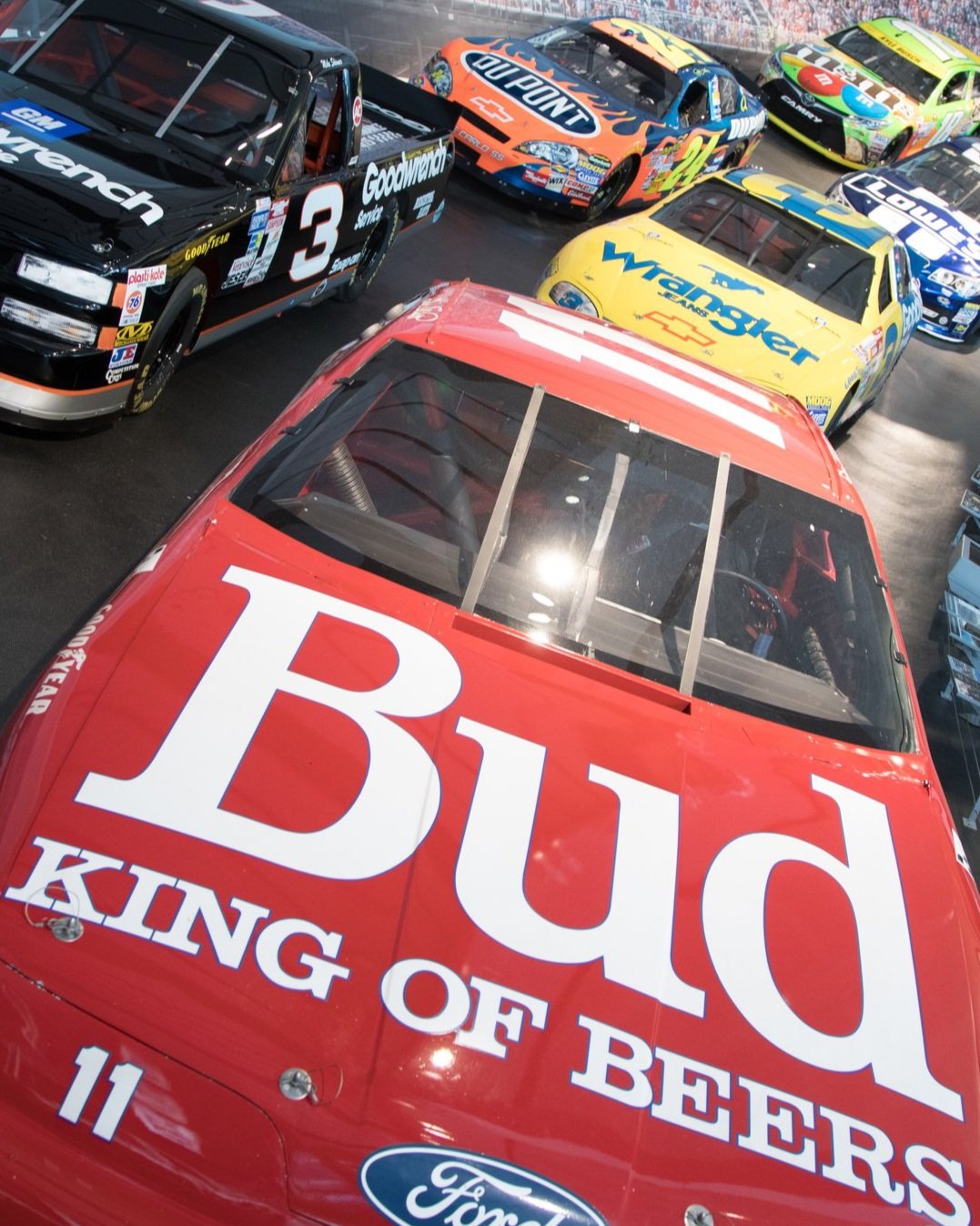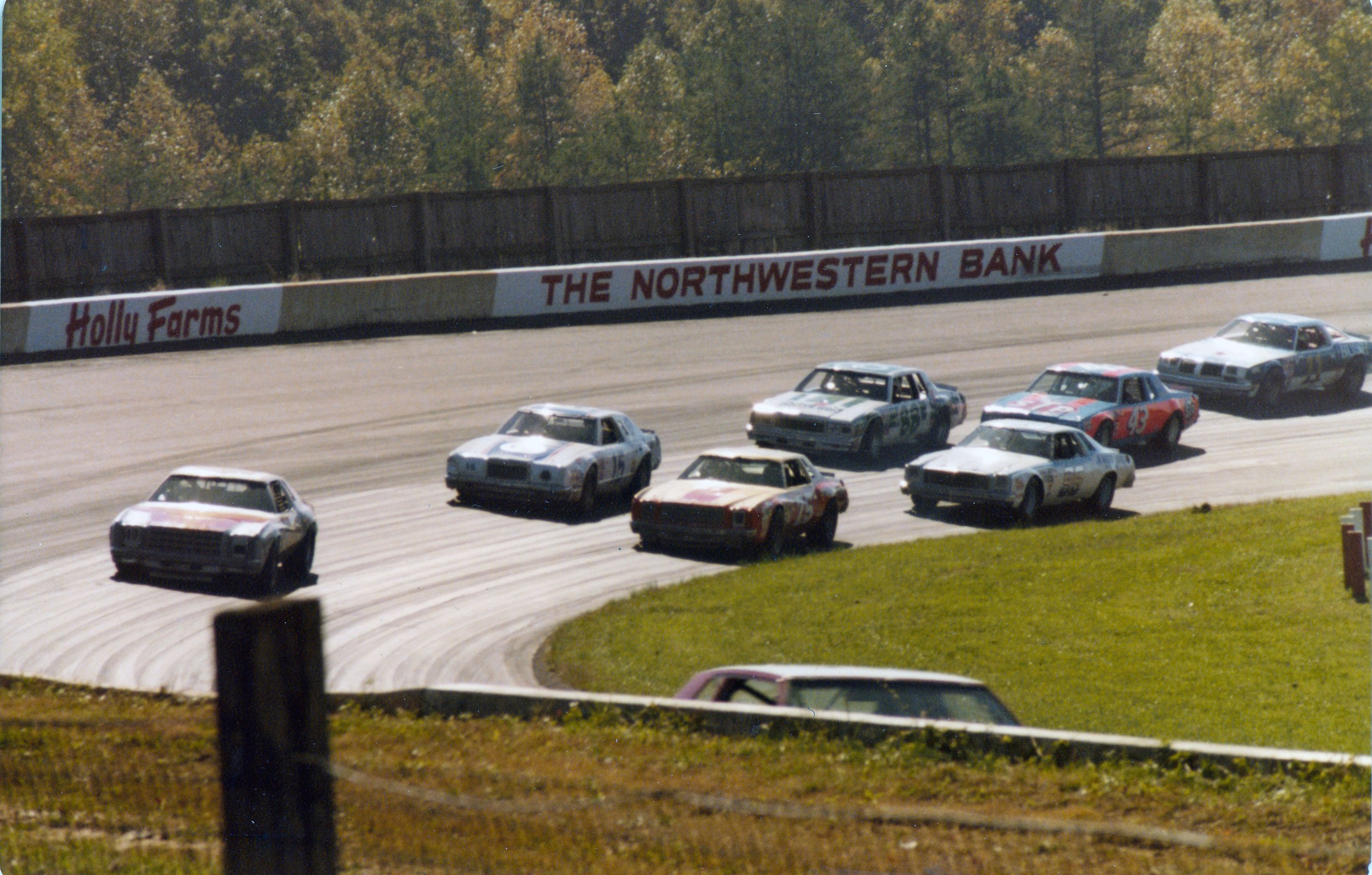Moonshine - North Carolina, USA
MOONSHINE AND MOTORSPORT:
A NORTH CAROLINA TRADITION
Paul Wade gets under the hood of NASCAR and uncovers its deep roots in the very American tradition of moonshine making.
Everyone loves a eureka moment and Charlotte, North Carolina provides a particularly unexpected one. The state is the epi-centre of stock car racing, a six billion dollar business. And, dedicated to fast cars and North Carolina’s superstar drivers such as Richard Petty, Dale Earnhardt Jr, Dale Jarrett and Junior Johnson, the NASCAR Hall of Fame explains why. But turn a corner on the fourth floor and a display stops you in your tracks: a moonshine still, complete with cooker, barrels and gleaming copper pipes.
This tribute to backwoods distilling links directly to the origins of NASCAR, the National Association for Stock Car Auto Racing. “This still was built and donated to us by Junior Johnson, the legendary driver,” says Tom Jensen, a curator at the Hall of Fame. “Aged 14, he was already ‘running moon’ along logging trails through the Brushy Mountains. He even perfected the bootleg turn, spinning his car 180 degrees to escape police roadblocks.” To what extent the driving was fuelled more directly by the hooch, history does not relate, but the exhibit shows how bootleggers successfully souped up their automobiles to outrun the law. And how, when ‘liquor cars’ were no longer profitable or necessary, racing them offered an adrenaline-pumping alternative.
Moonshine dates back to the Scots-Irish immigrants who settled in the fertile valleys of north-west North Carolina in the 1700s. They knew all about distilling and with their ‘waste not, want not’ mentality, turned surplus corn (what we call corn on the cob) into alcohol. Handy as a disinfectant, it could also be massaged into aching limbs, infused with herbs to create medicines – and swigged by the farmers and their friends.
Passed down through generations, distilling skills were highly-prized, especially during Prohibition. That nation-wide ban on booze ended in 1933, but some areas stayed ‘dry’. One was mountainous Wilkes County, North Carolina, the “Moonshine Capital of the World”, where illicit hooch continued to satisfy local thirst. It also satisfied a reluctance to pay liquor taxes in neighbouring ‘wet’ counties, where drinking was legal but expensive.
‘Aged 14, he was already ‘running moon’ along logging trails through the Brushy Mountains. He even perfected the bootleg turn, spinning his car 180 degrees to escape police roadblocks.’
Distributing the ‘white lightning’ was key – hence the link to NASCAR. There is an in-depth explanation displayed at the Wilkes Heritage Museum in Wilkesboro, where Director Jennifer Furr explains: “Cities like Winston-Salem had speakeasies and bars; folk had money to spend. But runners had to outfox the law to get there.” In Wilkes County in the late 1940s, Junior Johnson drove for his father, a notorious ‘shiner. Junior was an accomplished mechanic, constantly repairing and ‘improving’ the cars. With its supercharged V-8 engine, his 1940 Ford Coupe was fast; putting in a powerful Cadillac ambulance engine upped the ante for high-speed escapades.
‘When ‘liquor cars’ were no longer profitable or necessary, racing them offered an adrenaline-pumping alternative’
Today, Charlotte Motor Speedway backs up its claim as "America's Home for Racing" with crowds of 95,000. While North Wilkesboro Speedway was recently revived after decades of neglect and hosts its first NASCAR action in 27 years in May: the 2023 All-Star Race.
Just as evading the cops segued into NASCAR racing, so moonshine, too, has evolved. Now, this clear-liquor alternative to vodka is a force in the world of craft distilleries. For proof that like love and marriage, moonshine and stock car racing go together, visit Madison, North Carolina.
“If it hadn't been for whiskey, NASCAR wouldn't have been formed. That's a fact,” Johnson once said. “Moonshiners put more time, energy, thought, and love into their cars than any racers ever will. Lose on the track and you go home. Lose with a load of whiskey and you go to jail.” (In fact, in 1956, two years into his NASCAR career, Johnson was jailed for 11 months for running an illegal still. Thirty years later, President Reagan pardoned him).
Not surprisingly, moonshiners loved to challenge one another to see who had the fastest car. When these races began to be held on half-mile dirt ovals and quarter-mile paved circuits, crowds came to watch. In 1947, 10,000 people turned out at North Wilkesboro Speedway. Businessman and motor sport enthusiast Bill France Sr saw a gap in the market realising that local stock car races needed standardised rules and better promotion. In 1948, he created NASCAR and a generation of moonshiners accelerated into the limelight.
In 2007, Junior Johnson returned to the moonshine business, this time on the licensed side, as part-owner of Piedmont Distillers. At North Carolina’s first legal distillery since Prohibition, Piedmont created Midnight Moon, a moonshine inspired by the Johnson family’s own recipe.
Another Wilkes County legend was Willie Clay Call, best buddies with Junior Johnson. Willie used to haul hundreds of gallons of hooch all over North Carolina every night. And his driving was so fast that revenuers (federal agents) nicknamed him “The Uncatchable”. Certainly, he was never caught when driving his favourite Carolina blue 1961 Chrysler New Yorker. With its special suspension and an engine retuned to pump out way more power, Clay boasted that “It'd run 180 miles an hour loaded or unloaded, uphill or downhill - it didn't matter. It’s probably hauled more liquor than any car that's ever hit the highway."
In 2015, Call’s son Brian opened Call Family Distillers in Wilkesboro. A seventh-generation moonshiner, his smooth Uncatchable range is, of course, legal. Mellow flavours include cherry, strawberry and even apple pie. Tour the distillery and learn about ‘The Bull’, Call’s one-of-a-kind 2,100 gallon direct steam injection still; see original moonshine cars such as a restored 1940 Ford coupe and that sassy 1961 Chrysler; taste Call’s moonshines and whiskies. Time it right and you can join music fans for a foot-stomping time at the distillery’s Mash House stage, when everyone rocks out to national acts at Uncatchable Concert Series gigs.
Not all today’s moonshine has a motor sport link. Troy Ball, an entrepreneurial Texan who moved to North Carolina, runs Asheville Distilling. The USA’s first woman to be granted a whiskey distilling license recalls neighbours welcoming her with home-made moonshine: “I found it rather rough, but one day a nice 80-year-old brought me a jar of the good stuff, usually kept for himself. I was hooked!”
After prising secrets from several ‘good old boys’, Troy went into business. For her, ingredients are paramount – and local. She only uses Crooked Creek, a unique heirloom white corn from Peaceful Valley Farm, near Asheville. Her Troy & Sons Platinum moonshine was an instant success in 2011. Moonshine is a clear liquid; when aged in barrels, it becomes whiskey. Troy has now introduced Oak Reserve, matured in bourbon barrels, and Blonde Whiskey, which sits for five years in American oak. Both win plaudits.
But inevitably, you come back to the pairing: moonshine and motorsport. If you are arriving or departing from North Carolina’s Charlotte Douglas International Airport, do drop by Whisky River. Voted Best Airport Bar in America, this cheerful restaurant is owned by Dale Earnhardt Jr, a star driver from a celebrated NASCAR family. Order a Moonshine Mule cocktail, made with Junior Johnson’s Midnight Moon, and raise a toast to “Moonshine and motorsport: A North Carolina tradition!”
The Ballad of Thunder Road courtesy of Robert Mitchum.











